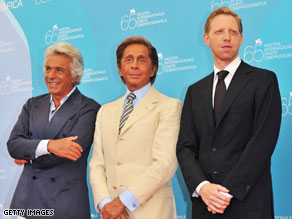You did a song for Hari Puttar... It is a fun song?
Yes, but let me clarify that it was a promotional video and not part of the movie. The producers came to me after the film was shot. I liked the concept and took it on.
How was the experience shooting with little kids?
I enjoyed every moment. The idea was very cute. And I had to dance with kids. I found it interesting and so took it up. I think it is a fun song.
The media has been terming it an item number.
It is a masti number where I play myself. The song is peppy and Punjabi -- a fun song. To term it an item number is not fine. It is a kids film.
What motivated you to do a kids film?
I have never done a kids film. I wanted to do the song as like I said, the cuteness appealed to me.
How was it working with Zain?
Zain is a good actor. It was fun working with him.
We don't see you much on the silver screen. What is reason for being selective?
I am running my production house now. And it takes up a lot of my time. I do not get much time to do films and besides, I need something that I enjoy to take it up.
It is said that Shilpa Shetty is making a film with you and AkshayKumar in the lead roles?
I wish I get these newsbreaks before you do. No, Shilpa was never making a film with me and Akshay Kumar. These stories are made up by media.
Television. No, I haven't thought about it. I live one day a time. I don't know what the future holds for me. I would like to do a great job at what I have taken on right now. And if in the future, I get
interested then well, it is a matter of that moment.
What do you feel is the USP of Hari Puttar – A Comedy of Terrors?
Why does anyone go to the theatre after buying a ticket? To be entertained. Hari Puttar – A Comedy of Terrors has that entertainment value. It is a fun film and I am sure that is one reason why everyone must see it.
Talking of kids films, one parting question. How does it feel to see
Taare Zameen Par being chosen for the Oscars?
Taare Zameen Par is a film that everybody loved. It is a brilliantly made film. I am very happy it has been chosen for the Oscars. And I am sure it will win.

























